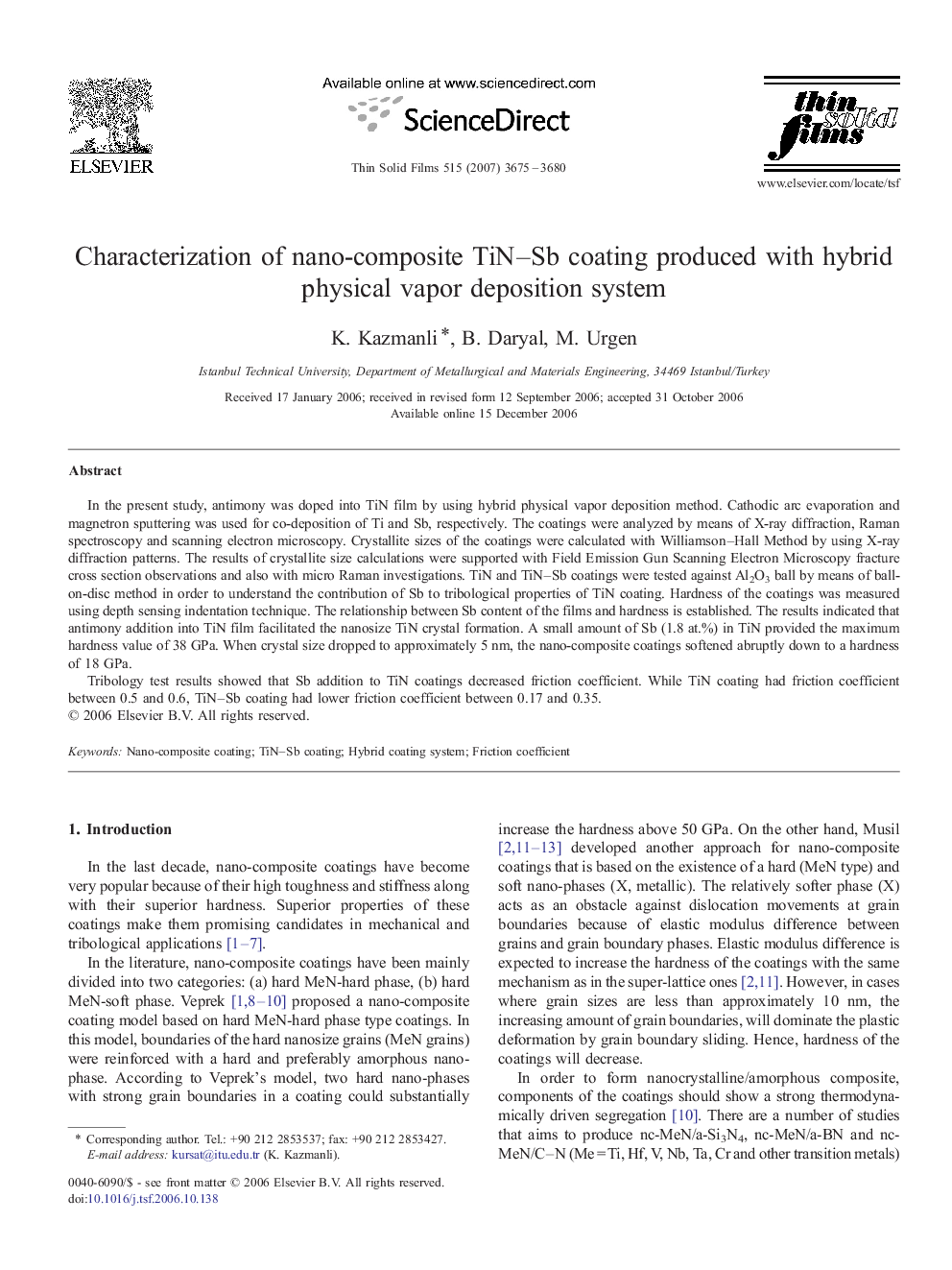| Article ID | Journal | Published Year | Pages | File Type |
|---|---|---|---|---|
| 1673012 | Thin Solid Films | 2007 | 6 Pages |
In the present study, antimony was doped into TiN film by using hybrid physical vapor deposition method. Cathodic arc evaporation and magnetron sputtering was used for co-deposition of Ti and Sb, respectively. The coatings were analyzed by means of X-ray diffraction, Raman spectroscopy and scanning electron microscopy. Crystallite sizes of the coatings were calculated with Williamson–Hall Method by using X-ray diffraction patterns. The results of crystallite size calculations were supported with Field Emission Gun Scanning Electron Microscopy fracture cross section observations and also with micro Raman investigations. TiN and TiN–Sb coatings were tested against Al2O3 ball by means of ball-on-disc method in order to understand the contribution of Sb to tribological properties of TiN coating. Hardness of the coatings was measured using depth sensing indentation technique. The relationship between Sb content of the films and hardness is established. The results indicated that antimony addition into TiN film facilitated the nanosize TiN crystal formation. A small amount of Sb (1.8 at.%) in TiN provided the maximum hardness value of 38 GPa. When crystal size dropped to approximately 5 nm, the nano-composite coatings softened abruptly down to a hardness of 18 GPa.Tribology test results showed that Sb addition to TiN coatings decreased friction coefficient. While TiN coating had friction coefficient between 0.5 and 0.6, TiN–Sb coating had lower friction coefficient between 0.17 and 0.35.
